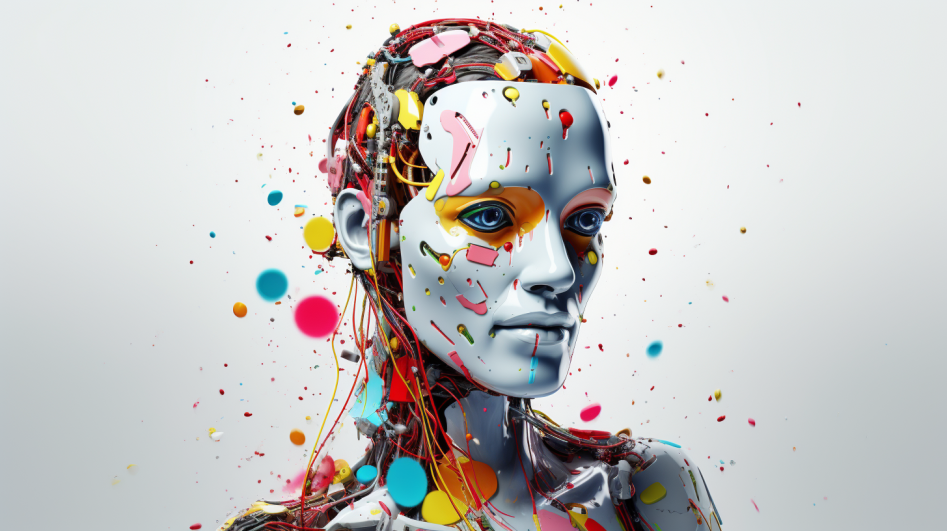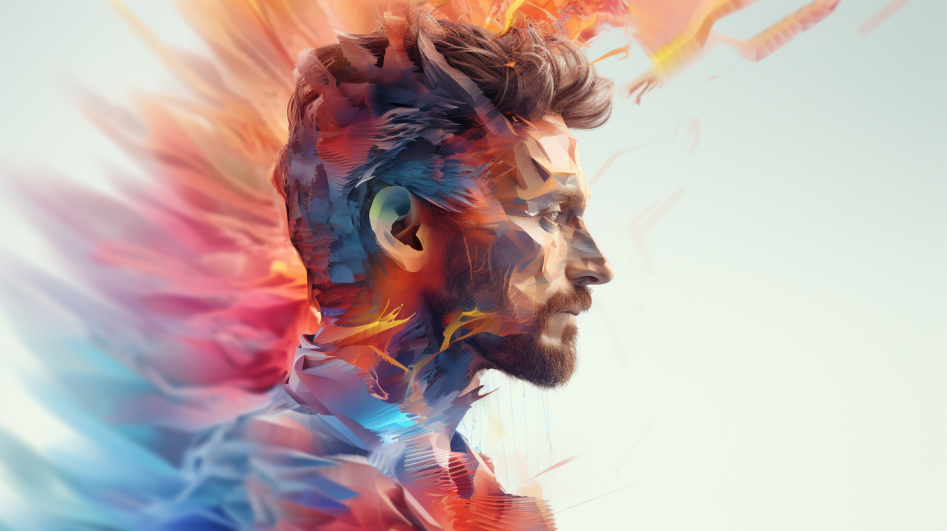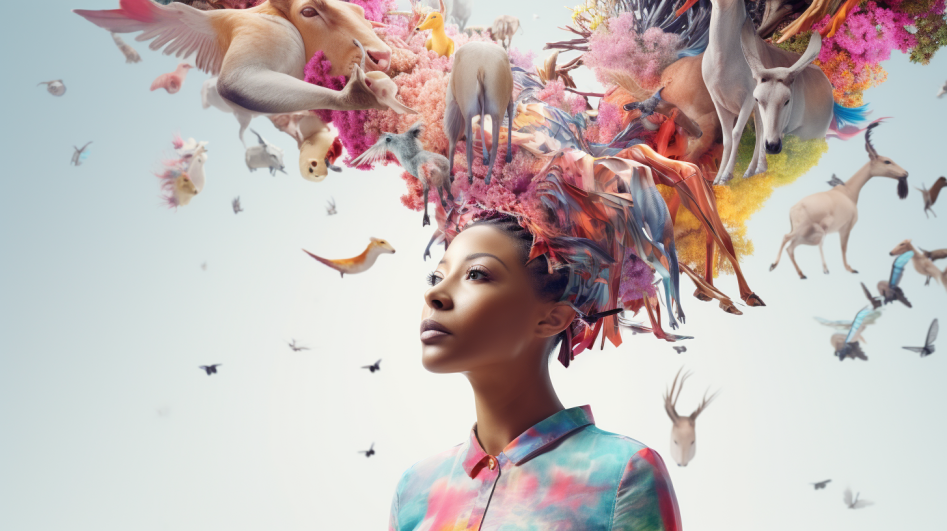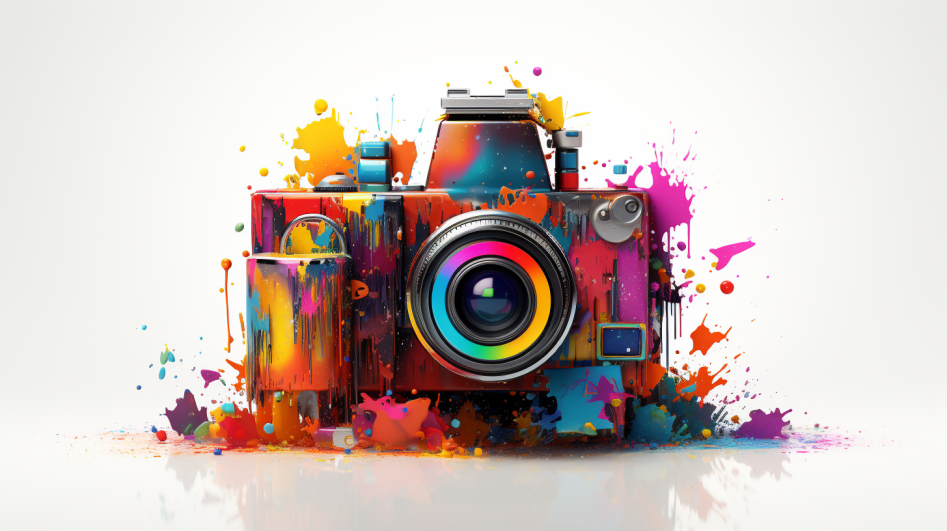AI-Generated Art: Blurring the Lines Between Photography and Painting

A journey through time in the world of visual artistry lands us somewhere between the birth of a charcoal sketch and the pixel perfection of digital photography. We've marveled at the artistic prowess of the Renaissance and been moved by the snapshots of reality that photography brings.
But history has come to a halt, bringing a new player into town: AI. As riveting as this disruption is, I feel the need to put my future-gazing goggles on. So, let’s take quick beat into the heart of this fascinating intersection, where binary meets brushwork and pixels mix with pigments.
Behind the Code
AI-generated art: sounds futuristic, right? Well, the future is now. AI-generated art leverages machine learning, neural networks, and Generative Adversarial Networks (GANs) to create unique and compelling visuals.
Unlike AI-assisted art, where humans hold the reins, AI-generated art is where the computer goes solo, brewing art with a dash of algorithms and a sprinkle of computational magic.
Remember that eye-popping portrait, "Edmond de Belamy," which sold for a whopping $432,500 at Christie's? It was created by an AI, not a human with a moustache and a beret.
A Creative Collision
The boundaries between photography and painting, once as solid as the Berlin Wall, have started to blur, thanks to our new "artists". AI can cherry-pick the precision and realism of photography and blend it with the expressiveness and emotion of a painting.
Let's take DeepArt or DeepDream as examples. They transform your casual selfie or that photo of your cat into a Picasso-esque or psychedelic Van Gogh piece. This creative cocktail of painting and photography, mixed and served by AI, signifies a new dawn in the world of visual artistry.

Challenging the Norm
Traditionalists might grumble and groan, but AI is here to play, and it's redefining the rule book. It challenges our understanding of creativity, prodding us to question what constitutes an artist or an art form.
The art world is a scene of excitement and bewilderment. Some artists see AI as a tool, while others see it as a rival. Galleries are abuzz with AI exhibitions, and critics are just as divided. Are they critiquing the work of an algorithm or the programmers who set it in motion?
Painting the Future
AI's potential in art is as broad as a Pollock and as detailed as a Vermeer. It's reshaping the landscape of art by blending photography and painting and possibly creating entirely new art forms. Imagine a world where AI creates art forms as yet unnamed and genres yet to be imagined.
On the democratic front, AI could become a tool for universal creativity, enabling anyone with a laptop to generate a work of art. The line between the connoisseur and the amateur is not just blurred—it's smudged beyond recognition.

The Art Market of Change
Artists will need to wield their brushes alongside bandwidth, mastering not just color theory but also coding. Art education will also need to evolve, teaching not only chiaroscuro but also neural networks. Or should it? That’s still up for debate.
The ripples of AI reach the shores of the art market, too. What's the value of an artwork with no physical form, only a digital one? How do we navigate authenticity issues when forgery is a matter of copy-paste? These questions about value, authenticity, and copyright will require new answers.
A Canvas for Ethical Debate
As we tango with AI in the art world, we're bound to step on a few philosophical toes. Can AI, a creation of human ingenuity, really be considered 'creative'? It's like asking if a mirror, though it can reflect the world, can see.
Beyond creativity, there's the potential for misuse. If AI can paint like Picasso, it can also create deep fakes, triggering a host of ethical conundrums. In the labyrinth of AI's impact, we must trace a path between innovation and integrity.
Bottom Line
As we flirt with the exciting yet daunting changes AI brings to art, we find ourselves standing at a crossroads. One path leads to the past, where human creativity is unchallenged and art is tangible. The other leads to a future where creativity is democratized and art is as fluid as the data it springs from.
Art has always been a reflection of societal change. Today, as we oscillate between awe and apprehension, one thing is clear: the canvas of tomorrow is digital, and our palette is as much about pixels and programming as it is about pigments.
The dialogue has just begun, and the exploration of AI's role in art is a journey we are all part of. As we continue this voyage into the heart of AI-generated art, we should remember that art, in any form, serves to reflect, challenge, and inspire. Regardless of the medium, this fundamental truth remains!

